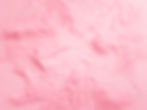- Paul Anthony Jones
Pink
(n.) a pale red colour
Originally posted here, this etymological story is now one of 100 that can be found in the HH book, The Accidental Dictionary
Looking back through the HH archives the other day, we spotted this:
So the name Pont Neuf is a misnomer—it really doesn’t (or, at least, it no longer) fits the bridge in question.
The dictionary is so full of words like these. Koala bears aren’t bears. Irish moss is an algae. Chinese chequers aren’t Chinese. Fireflies aren’t flies. Peanuts aren’t nuts. Thousand Island dressing takes its name from an archipelago of 1,864 islands. And let’s not get started on the Hundred Years War. But as misnomers go, this one will forever be one of the best:
So how the dickens did that happen?
The colour pink as we know it today takes its name from the Dianthus flowers commonly known as pinks. They in turn are thought to take their name either from the use of pink as a verb, meaning “to perforate” or “to give an ornate trim”, or else from the even older use of pink as an adjective, meaning “half-closed” or “winking” (which was, at the risk of making this discussion even more complicated, the original meaning of pink-eye). If that’s the case, then pink probably has its roots in Dutch, and might even be a distant relative of blink.
The “pink” in French pink is something of a mystery, but one very plausible theory claims that it derives from an old German word, pinkeln, literally meaning “to pee” (hence its yellowy colour). This murky-yellow shade of pink is actually the oldest recorded use of the word pink in English—and remains in use in some artistic contexts—but nowadays the pale red version has all but taken its place.
Why? Well again, no one is entirely sure. But one popular explanation is that the use of pink to refer to pale red derives from the popularity of Dianthus flowers in Elizabethan England. According to the story, pinks were one of Elizabeth I’s favourite flowers, and so were grown and sold in enormous numbers all across sixteenth century England. That helped to firmly attach their name, pink, to their familiar pale-fuchsia colour, and it’s that colour that has remained in place ever since.



